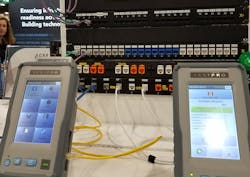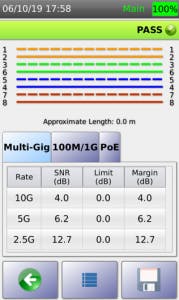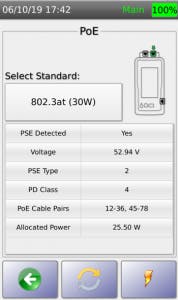Cat 6A cabling: Benefits, cautions and use-cases
By ANDREW FROEHLICH, West Gate Networks, LLC -- Network and cabling professionals are likely to come across different Ethernet cabling standards over the course of their career. These range from legacy installs of CAT3 and CAT5e — to the modern ultra-high-performance data center CAT8 standard. Yet, for most access-layer installs, CAT6 and CAT6A are the two most common standards to choose from. This cabling will be responsible for connecting end devices such as PC’s, laptops, WiFi access points and a plethora of Internet of Things (IoT) devices.
When considering Ethernet cabling install options for access-layer deployments, there are several things to look at. One of the more important decisions is whether endpoints will require the higher speed and PoE performance of CAT6A – while being willing accept a few inconveniences that come with the deployment. In this article, we’ll walk through the benefits and drawbacks of CAT6A compared to CAT6. Additionally, we’ll point out real-world circumstances that justify the added cost and installation hurdles that come with running and certifying the higher-performance cabling.
CAT6A Benefits
One key benefit of CAT6A over CAT6 is speed. A CAT6 cable can run 10/100/1000BASE-T Ethernet at speeds up to 1000 Mbps and a maximum length of 100 meters. The same is also true for 2.5GBASE-T and 5GBASE-T running at 2.5 and 5 Gbps, respectively. However, when moving up to the newer 10GBASE-T standard that operates at speeds of 10 Gbps, CAT6 cabling is only supported up to a maximum distance of 37 to 55 meters, depending on the levels of alien crosstalk in the installation environment.
Considering that most building access-layer networking closets are built around a 100-meter maximum distance, 37 and 55 meter runs would end up leaving many cable pulls short.
The ANSI/TIA-568-C.1 specification cable standard – otherwise known as CAT6A – is the solution to the distance shortcomings of CAT6 when working with 10GBASE-T Ethernet. In addition to the speed/distance benefits, CAT6A is defined for frequencies up to 500 MHz and improved noise canceling properties. Both translate into improved Ethernet performance with fewer chances of external interference.
A second benefit of CAT6A that is growing in importance is that it can handle higher levels of power over Ethernet (PoE) output without any performance degradation. Endpoints such as WiFi access points, surveillance cameras, intelligent lighting and monitoring/automation sensors are growing increasingly power hungry. The latest 802.3bt PoE specifications support 60W (Type 3) to 100W (Type 4) of output per cable run. That’s as much as three times the maximum Wattage specified in the 802.3at (PoE+) standard.
Even though 802.3bt utilizes all 4 pair of wires as opposed to two, more power output translates into more heat on the wire. When cables get hot, they become susceptible to what’s known as insertion loss. Transmitting added power to end devices also causes an increased chance of DC resistance unbalance. Both problems are more likely to occur when running CAT6 cabling as opposed to CAT6A. CAT6A conductors are thicker – which can help dissipate the heat.
Additionally, DC resistance unbalance is less likely to occur in high-quality CAT6A cabling due to the likelihood that the cabling conductor diameter will not vary as much compared to lower cost CAT6 alternatives. Ultimately, the only way to verify that cabling runs adhere to 802.3bt standards is to perform cable certification tests using a tool such as the AEM TestPro CV100 combined with the AD-NET-CABLE adapter.


